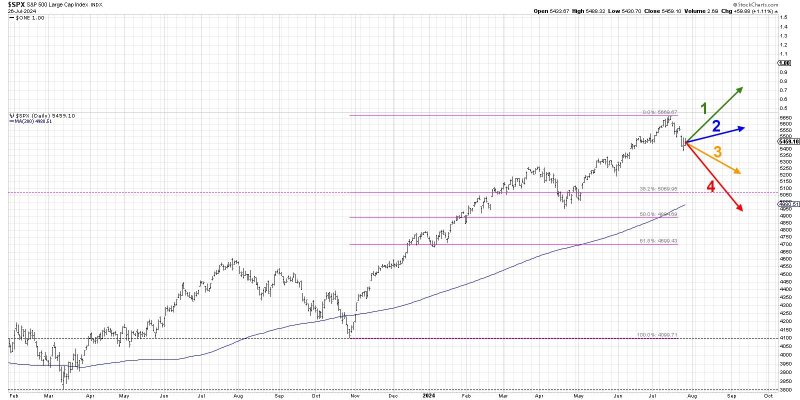The stock market has always been a subject of interest and speculation for investors. As the economy navigates through various stages, the performance of key stock indices like the S&P 500 becomes a significant barometer for measuring the overall market sentiment and economic health. With the S&P 500 flirting near the historically significant mark of 5000, investors are eager to know whether it will breach this level by September or face resistance.
An important factor that influences the movement of stock indices is the overall economic environment. As the global economy recovers from the impact of the pandemic, investors are closely monitoring key economic indicators such as GDP growth, unemployment rates, inflation, and interest rates. Positive economic data generally translates into bullish sentiment in the stock market, driving indices higher. On the contrary, any negative surprises in economic indicators could lead to a pullback in the stock market.
Geopolitical events and policy decisions also play a crucial role in shaping the direction of the stock market. Events such as trade tensions, political instability, regulatory changes, and monetary policy decisions can cause volatility in financial markets. Investors often react to such events by adjusting their portfolios, which could impact the movement of stock indices like the S&P 500.
Another key factor that influences the performance of stock indices is corporate earnings. Earnings reports and guidance provided by companies give investors insights into the financial health of businesses. Strong earnings growth can drive stock prices higher, while disappointing results could lead to a sell-off in the market. As the S&P 500 is a market-cap-weighted index, the performance of large-cap companies exerts a significant influence on its movement.
Technical analysis is another tool used by investors to predict the future direction of stock indices. Chart patterns, trend lines, moving averages, and other technical indicators are analyzed to identify potential support and resistance levels. Traders use this information to make informed decisions about buying or selling stocks. If the S&P 500 continues to show strength and breaks above the key resistance level of 5000, it could attract more buyers, driving the index higher.
Investor sentiment is a crucial intangible factor that impacts stock market performance. Fear, greed, optimism, and pessimism among investors can lead to market swings. Sentiment indicators such as the CBOE Volatility Index (VIX) and surveys of investor sentiment provide insights into market sentiment. Positive sentiment can create a bullish market environment, while negative sentiment can lead to a market correction.
In conclusion, the prospect of the S&P 500 breaking above 5000 by September hinges on a combination of economic data, geopolitical events, corporate earnings, technical analysis, and investor sentiment. While predicting market movements with certainty is challenging, staying informed about these factors can help investors make informed decisions. As always, diversification, risk management, and a long-term investment perspective are essential for navigating the uncertainties of the stock market.

